-
 Bitcoin
Bitcoin $116400
-0.36% -
 Ethereum
Ethereum $4033
3.40% -
 XRP
XRP $3.302
-1.26% -
 Tether USDt
Tether USDt $1.000
-0.02% -
 BNB
BNB $796.1
1.67% -
 Solana
Solana $177.8
1.89% -
 USDC
USDC $0.9999
0.00% -
 Dogecoin
Dogecoin $0.2314
4.09% -
 TRON
TRON $0.3381
0.14% -
 Cardano
Cardano $0.7989
1.22% -
 Stellar
Stellar $0.4496
-1.84% -
 Chainlink
Chainlink $20.42
9.42% -
 Hyperliquid
Hyperliquid $41.17
0.88% -
 Sui
Sui $3.914
3.77% -
 Bitcoin Cash
Bitcoin Cash $584.7
1.52% -
 Hedera
Hedera $0.2632
-0.54% -
 Avalanche
Avalanche $24.09
3.40% -
 Ethena USDe
Ethena USDe $1.001
-0.02% -
 Litecoin
Litecoin $123.2
1.33% -
 Toncoin
Toncoin $3.318
-0.04% -
 UNUS SED LEO
UNUS SED LEO $8.984
-0.05% -
 Shiba Inu
Shiba Inu $0.00001323
2.85% -
 Uniswap
Uniswap $10.90
4.41% -
 Polkadot
Polkadot $3.999
3.34% -
 Dai
Dai $1.000
0.01% -
 Cronos
Cronos $0.1630
9.64% -
 Bitget Token
Bitget Token $4.484
0.82% -
 Monero
Monero $272.4
2.44% -
 Pepe
Pepe $0.00001173
6.03% -
 Aave
Aave $290.8
2.88%
How does DMI judge trend relay? What does ADX sideways trading at a high level represent?
DMI helps traders gauge trend strength and identify reversals in crypto markets using +DI, -DI, and ADX lines for effective trading strategies.
Jun 03, 2025 at 02:56 am
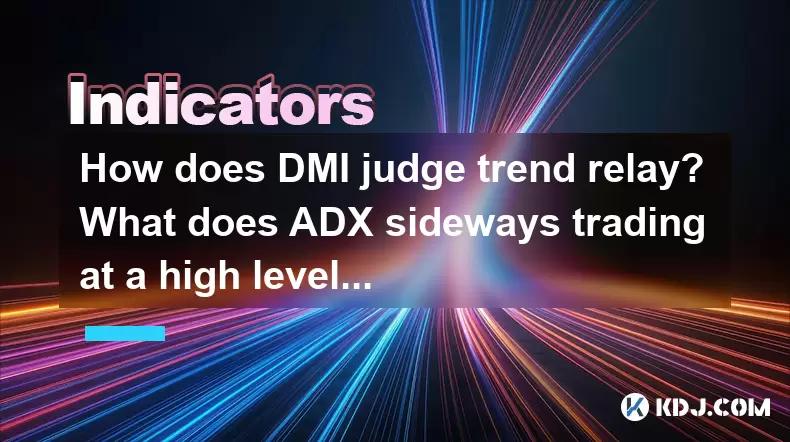
Understanding DMI and Its Role in Trend Analysis
The Directional Movement Index (DMI) is a powerful technical indicator used by traders within the cryptocurrency market to gauge the strength of a trend and identify potential trend reversals. Comprising three lines—Positive Directional Indicator (+DI), Negative Directional Indicator (-DI), and Average Directional Index (ADX)—DMI helps traders understand the dynamics of market trends. The +DI measures the upward movement in price, while the -DI measures the downward movement. The ADX, on the other hand, quantifies the strength of the trend, regardless of its direction.
How DMI Judges Trend Relay
To understand how DMI judges trend relay, it's essential to analyze the interactions between the +DI and -DI lines. A trend relay occurs when there is a shift in the dominant trend, which can be detected by observing the crossovers between the +DI and -DI lines.
- When the +DI line crosses above the -DI line, it indicates that the upward momentum is gaining strength, suggesting a potential bullish trend relay.
- Conversely, when the -DI line crosses above the +DI line, it signals that the downward momentum is becoming more dominant, hinting at a bearish trend relay.
Traders should also pay attention to the slope of the ADX line. A rising ADX line, whether above or below the 25 level, indicates increasing trend strength, which can validate the trend relay signaled by the +DI and -DI crossovers.
Interpreting ADX Sideways Trading at a High Level
The Average Directional Index (ADX) is particularly useful for understanding the strength of a trend. When the ADX is trading sideways at a high level, typically above 25, it suggests that the current trend is strong and well-established. However, a sideways movement in the ADX at a high level can also indicate that the trend is mature and might be nearing a potential reversal or consolidation phase.
- If the ADX remains sideways above 25 but below 50, it signifies a strong but not extreme trend.
- If the ADX is sideways above 50, it indicates an extremely strong trend, which could be in the final stages before a significant shift.
Traders should monitor other technical indicators and market conditions to confirm whether the trend is likely to continue or if a reversal is imminent.
Practical Application of DMI in Cryptocurrency Trading
Applying DMI in cryptocurrency trading involves a systematic approach to interpreting the signals provided by the +DI, -DI, and ADX lines. Here's how traders can use DMI effectively:
- Identify Trend Direction: Use the crossovers between the +DI and -DI to determine the direction of the trend. A bullish crossover (when +DI crosses above -DI) suggests a buying opportunity, while a bearish crossover (when -DI crosses above +DI) indicates a potential selling point.
- Assess Trend Strength: Monitor the ADX line to gauge the strength of the trend. An ADX value above 25 indicates a strong trend, while values below 25 suggest a weak or non-existent trend.
- Confirm Trend Relay: When a crossover occurs, look for a rising ADX to confirm the validity of the trend relay. A falling ADX might indicate that the trend is weakening, and the crossover might not be reliable.
Combining DMI with Other Indicators
While DMI is a robust indicator on its own, combining it with other technical indicators can enhance its effectiveness in cryptocurrency trading. Some popular indicators to use alongside DMI include:
- Moving Averages: Use moving averages to confirm the trend direction indicated by DMI. For example, if DMI signals a bullish trend, a rising moving average can provide additional confirmation.
- Relative Strength Index (RSI): RSI can help identify overbought or oversold conditions, which can be useful in conjunction with DMI signals. A bullish DMI signal combined with an RSI below 70 might suggest a strong buying opportunity.
- MACD (Moving Average Convergence Divergence): MACD can confirm the momentum of the trend indicated by DMI. A bullish DMI crossover accompanied by a bullish MACD crossover can provide a strong signal for entering a long position.
Using DMI for Entry and Exit Points
Determining entry and exit points using DMI involves a careful analysis of the signals provided by the +DI, -DI, and ADX lines. Here's how traders can use DMI to optimize their trading strategy:
- Entry Points: Look for bullish crossovers (when +DI crosses above -DI) and a rising ADX to enter long positions. For short positions, wait for bearish crossovers (when -DI crosses above +DI) and a rising ADX.
- Exit Points: Monitor the ADX for signs of a weakening trend. If the ADX starts to decline after being in a strong trend, it might be time to exit the position. Additionally, a bearish crossover after a bullish trend can signal an exit point for long positions, and vice versa for short positions.
Frequently Asked Questions
Q1: Can DMI be used effectively in volatile cryptocurrency markets?
Yes, DMI can be particularly useful in volatile markets as it helps traders identify the strength and direction of trends amidst the noise. By focusing on the ADX and the crossovers between the +DI and -DI, traders can filter out short-term fluctuations and focus on more significant trend movements.
Q2: How often should I check the DMI signals in cryptocurrency trading?
The frequency of checking DMI signals depends on your trading style. For day traders, checking DMI signals every few hours or even more frequently might be necessary. For swing traders, checking the signals daily or weekly could be sufficient. Always consider the timeframe of your trading strategy when deciding how often to monitor DMI.
Q3: Is DMI suitable for all types of cryptocurrencies?
DMI can be applied to all types of cryptocurrencies, but its effectiveness might vary depending on the liquidity and trading volume of the specific cryptocurrency. For highly liquid cryptocurrencies like Bitcoin and Ethereum, DMI signals are generally more reliable. For less liquid cryptocurrencies, the signals might be less consistent due to higher volatility and lower trading volumes.
Q4: Can DMI be used alone, or should it always be combined with other indicators?
While DMI can be used alone for basic trend analysis, combining it with other indicators can enhance its reliability and provide a more comprehensive view of market conditions. Using DMI in conjunction with moving averages, RSI, or MACD can help confirm signals and reduce the risk of false positives.
Disclaimer:info@kdj.com
The information provided is not trading advice. kdj.com does not assume any responsibility for any investments made based on the information provided in this article. Cryptocurrencies are highly volatile and it is highly recommended that you invest with caution after thorough research!
If you believe that the content used on this website infringes your copyright, please contact us immediately (info@kdj.com) and we will delete it promptly.
- SHIB Price, Meme Coin Mania, and the 250x Potential Hunt
- 2025-08-09 16:30:13
- SOL, ETFs, and AI: Crypto's Triple Threat Sensation!
- 2025-08-09 17:10:12
- Tokenized Stock on Solana: SOL Price Reacts to Exodus's Bold Move
- 2025-08-09 17:10:12
- Cardano, Mutuum Finance, Millionaires 2025: A New Wave of Crypto Fortunes?
- 2025-08-09 17:50:12
- Meme Coins on Blockchains in 2025: Hype or the Future?
- 2025-08-09 16:50:11
- World Liberty Financial, Public Listing, and WLFI Tokens: A New York Minute on the Trump-Backed Crypto Venture
- 2025-08-09 16:50:11
Related knowledge

What does it mean when the Triple Moving Average (TRIX) turns downward but the price doesn't fall?
Aug 09,2025 at 12:42pm
Understanding the Triple Moving Average (TRIX) IndicatorThe Triple Moving Average, commonly known as TRIX, is a momentum oscillator designed to filter...

What does it mean when the Williams' oscillator repeatedly hits bottoms but fails to rebound?
Aug 09,2025 at 09:28am
Understanding the Williams %R OscillatorThe Williams %R oscillator, developed by Larry Williams, is a momentum indicator used in technical analysis to...
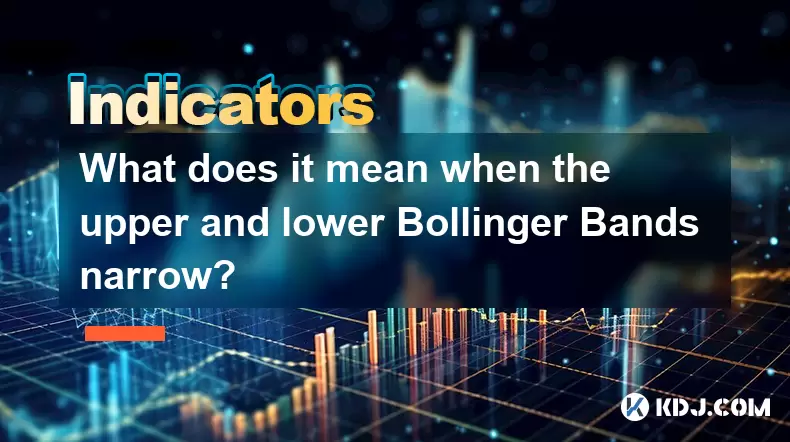
What does it mean when the upper and lower Bollinger Bands narrow?
Aug 09,2025 at 03:00pm
Understanding Bollinger Bands in Cryptocurrency TradingBollinger Bands are a widely used technical analysis tool in the cryptocurrency market, develop...
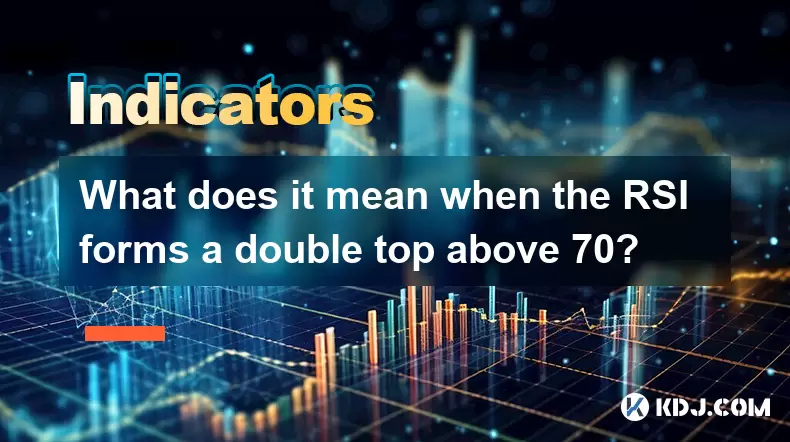
What does it mean when the RSI forms a double top above 70?
Aug 09,2025 at 05:50pm
Understanding the RSI and Overbought ConditionsThe Relative Strength Index (RSI) is a momentum oscillator that measures the speed and change of price ...
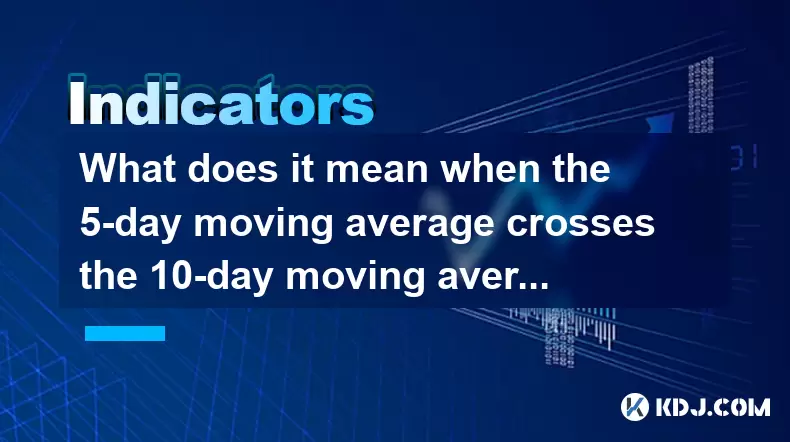
What does it mean when the 5-day moving average crosses the 10-day moving average but the 20-day moving average remains upward?
Aug 09,2025 at 03:35pm
Understanding Moving Averages in Cryptocurrency TradingMoving averages are foundational tools in technical analysis, especially within the cryptocurre...
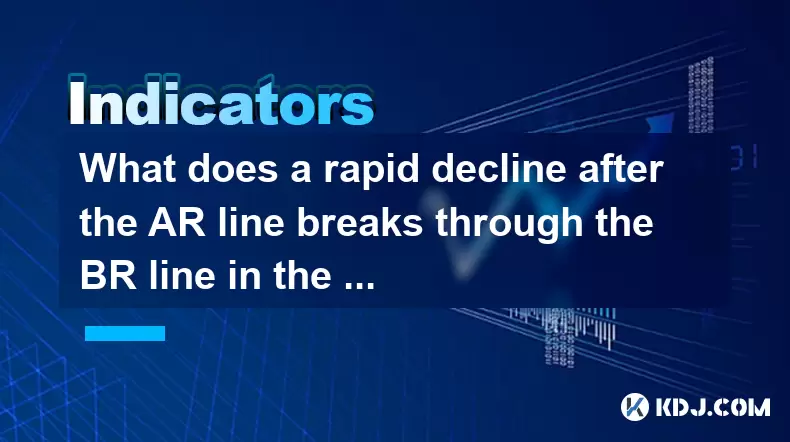
What does a rapid decline after the AR line breaks through the BR line in the ARBR indicator indicate?
Aug 09,2025 at 04:42pm
Understanding the ARBR Indicator ComponentsThe ARBR indicator is a technical analysis tool that combines two oscillators: the AR (Amplitude Ratio) and...

What does it mean when the Triple Moving Average (TRIX) turns downward but the price doesn't fall?
Aug 09,2025 at 12:42pm
Understanding the Triple Moving Average (TRIX) IndicatorThe Triple Moving Average, commonly known as TRIX, is a momentum oscillator designed to filter...

What does it mean when the Williams' oscillator repeatedly hits bottoms but fails to rebound?
Aug 09,2025 at 09:28am
Understanding the Williams %R OscillatorThe Williams %R oscillator, developed by Larry Williams, is a momentum indicator used in technical analysis to...

What does it mean when the upper and lower Bollinger Bands narrow?
Aug 09,2025 at 03:00pm
Understanding Bollinger Bands in Cryptocurrency TradingBollinger Bands are a widely used technical analysis tool in the cryptocurrency market, develop...

What does it mean when the RSI forms a double top above 70?
Aug 09,2025 at 05:50pm
Understanding the RSI and Overbought ConditionsThe Relative Strength Index (RSI) is a momentum oscillator that measures the speed and change of price ...

What does it mean when the 5-day moving average crosses the 10-day moving average but the 20-day moving average remains upward?
Aug 09,2025 at 03:35pm
Understanding Moving Averages in Cryptocurrency TradingMoving averages are foundational tools in technical analysis, especially within the cryptocurre...

What does a rapid decline after the AR line breaks through the BR line in the ARBR indicator indicate?
Aug 09,2025 at 04:42pm
Understanding the ARBR Indicator ComponentsThe ARBR indicator is a technical analysis tool that combines two oscillators: the AR (Amplitude Ratio) and...
See all articles

























































































